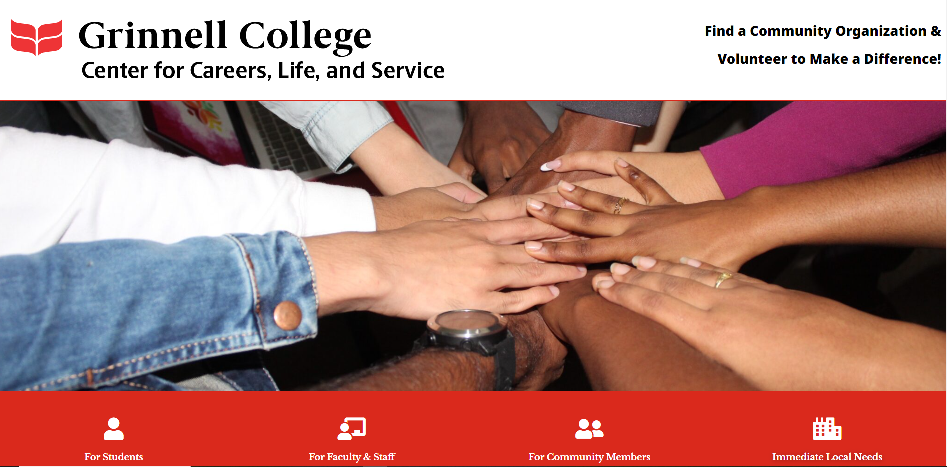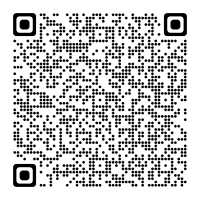
I have had the honor to serve in an Americorps Campus Compact position working with the Service and Social Innovation team in the Center for Careers, Life, & Service at Grinnell College. While I’ve had great opportunities to support the CLS in many ways, including creating fantastical balloon weiner-dogs, the main thrust of this position has been to create this extensive, searchable database of service opportunities. I was gifted with an initial list of community partners and information from their websites in an Excel spreadsheet, and this was the starting point to contact, network, and compile information that would ultimately be merged into a beautiful and navigable database, thanks to Tierney Steelberg and the Grinnell Digital Liberal Arts team.
Behind the scenes of the database you see today lives an Excel spreadsheet that is completely indecipherable printed on a sheet of paper, as the number of columns reduces the print to an ants-eye view. I am thankful for the technology that allows all of this information to sort into something that is functional!

These columns include pertinent information on each non-profit organization’s mission, operation, needs, what is offered and/or needed in the way of training, supplies, and other logistics such as transportation, where they are located, how to apply and who to contact. There are also columns with simple notes indicating whether the service work is in-person, hybrid, or virtual, for an on-going volunteer relationship or one-time events, and to indicate if the organization is equipped to handle groups of volunteers on projects. Other useful columns beyond those are whether a background check is needed, the actual mileage from Grinnell College to the physical location of the organization, whether or not there is an image or logo on file, and for which career communities the service work is most relevant. More than 75 potential keyword searches have been condensed to about 50, and each of the keywords appropriate to the service and mission of each non-profit are noted in the spreadsheet.
As fewer than 2/3 of the potential community partners within our 60 mile radius are active on the front-facing part of the database, it has been useful to also maintain a column with notes on the contact history. This is a record of how we’ve tried to make contact, and who we’ve tried to contact, as well as notes on the successful contacts themselves, if they’ve filled out the survey, and whether we “met” on the phone, virtually, or in-person.
Here’s a sample contact history entry, notes entered in reverse chronological order: “READY 8-4 survey returned by *** and info entered; 7-20 Facebook correspondence with ****, sent survey; 6-24 met with ***** in Des Moines, she said she was not the one to answer the survey but that someone will be getting back – follow up with her for specific names; 6-14 follow-up sent; 5-10 initial contact and survey sent”
It’s safe to say that non-profit organizations are very busy with their day-to-day functions so some can be challenging to actually connect with! I love being able to enter that word READY at the beginning of the contact history column, as the non-profit organization goes live on the database only once there has been actual dialogue and the organization’s spreadsheet columns are full of the needed information to present a thorough and functional database listing. This way we know that the non-profit is ready and waiting to be reached out to by anyone using the database, and potential inquiries about volunteerism will be received by a responsive ear.
The heart-warming and thrilling aspect of this work, besides the great pleasure it has been to work with my savvy and entertaining colleagues in the Center for Careers, Life, & Service, has been making those actual connections with our community partners. It has been exciting and fascinating to learn about what they are doing, how the smaller organizations recognized a need and grew from there, and how the bigger organizations have developed an extensive reach of programs and services. A quick glance over the keywords reveals a diversity of causes, from Addiction to Sustainability & Conservation, Arts to Race & Ethnicity, Children & Youth to Justice & Legal, as well as an array of skill sets to utilize in service, like Companionship, Computers & Technology, Gardening, Languages (translators, etc), and Media Outreach. Put a blindfold on me and a dart in my hand, spin me around, and point me in front of all the organizations: wherever that dart lands, there is a non-profit with a compelling mission and the infrastructure to support service in a meaningful and viable way. I can only say that I am sorry we don’t yet have the technology to live several different lives, as I would absolutely sign on to put my full weight into so many different organizations. I hope you have the same experience when you investigate the database!

The original 40-something entries has grown to 129 organizations with which we now have hands-on, person-to-person contact. Currently there are also an additional 86 that I have yet to succeed in pinning down and learning what we can do to support their cause. While I am moving on from this Americorps position at the end of the month, the CLS Service and Social Innovation team will pick up where I have left off with the database. I am quite sure that the numbers will continue to change: the 129 active listings will grow, and while the current 86 potential partners may reduce in number as we gain connection, we continue to discover new non-profits filling a variety of service needs.
I am looking forward to checking back on everyone’s work in a year to see what all that looks like…and more importantly, to hear stories of collaboration and giving and great things being accomplished from this network for good! Thank you Grinnell College, the CLS, the Service and Social Innovation team, Susan Sanning, and Americorps Campus Compact for making this possible.
